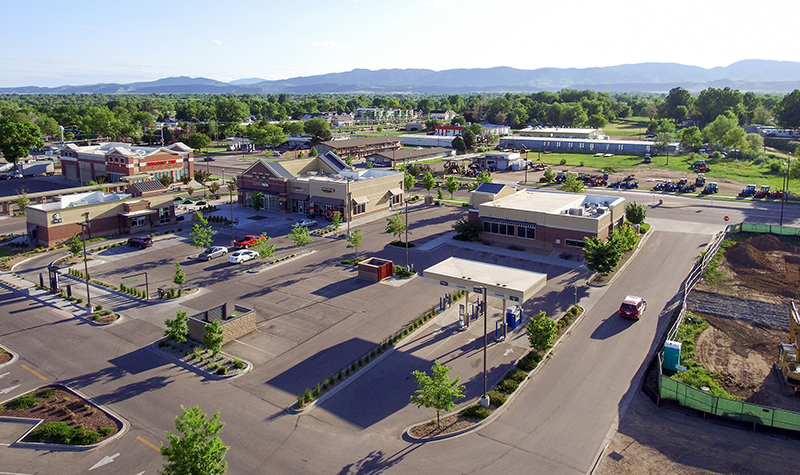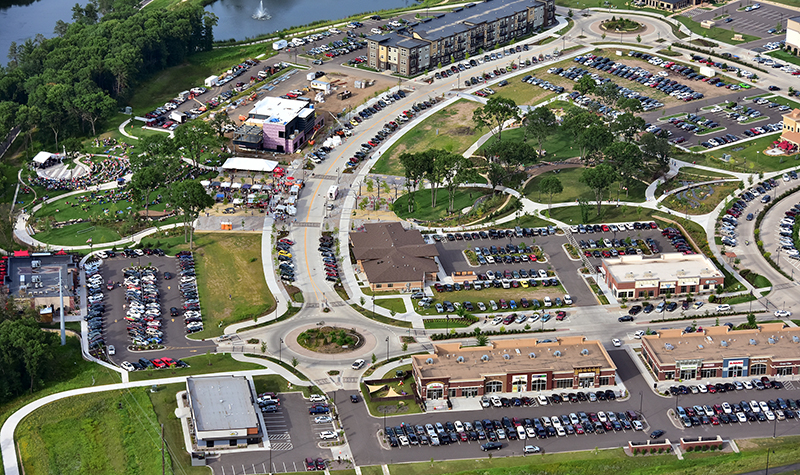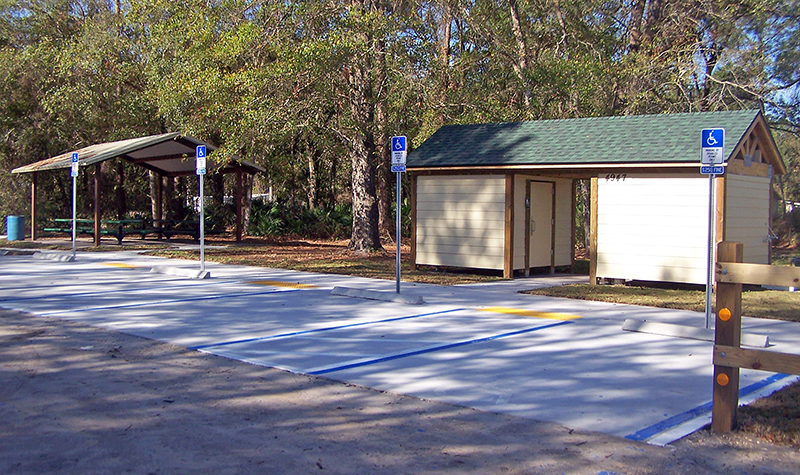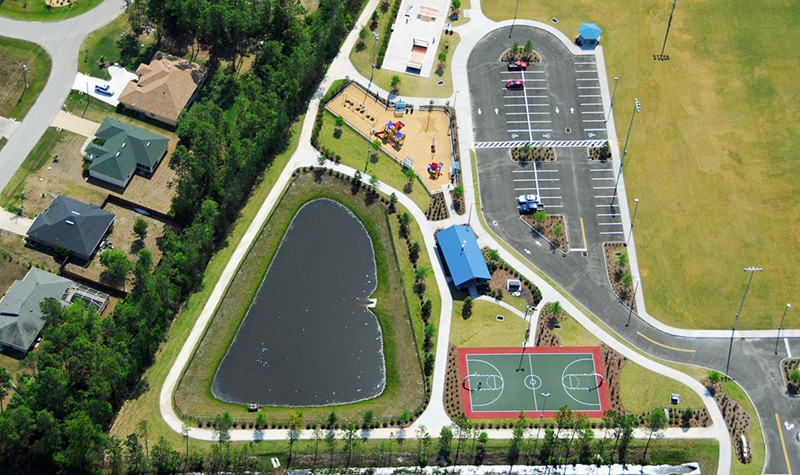How to Design a Better Parking Lot
 By Scott Maier, PE
By Scott Maier, PE
Parking lots are not generally known as the most orderly environment in modern society. A poorly designed parking lot could easily be compared to the bumper cars at the county fair. But a well-designed, well-maintained parking lot helps people get in efficiently, find their way to a stall, walk safely to the door, and get back out unscathed.

About the Expert:
Scott Maier. project manager, has worked on developments in more than 25 states, bringing experience in design, permitting, construction management, and asset management. His project experience spans retail, commercial, industrial, multi-family residential, office, and municipal developments.
Key elements designers keep in mind when designing a parking lot include:
Entry/Exit Spacing
Proper, safe spacing of entrances and exits from nearby intersections is critical in preventing back-ups of traffic attempting to enter a parking lot, which in turn can cause clogged-up intersections, rear-end accidents, and unsafe turning maneuvers. Those safe distances vary based on the traffic volumes of the driveway and adjacent streets. Other factors influencing driveway spacing include the land use the parking lot is serving and whether right-turn lanes are necessary at the driveways. Depending on all those factors, driveways are spaced 300 to 600 feet away from intersections.
 In the case of establishing especially large parking lots, it may be necessary to add turning lanes or even entire through lanes on adjacent streets, and possibly even signalization of parking lot entrances or intersections near them. In many cases the developer is asked to pay some or all of the costs of those municipal improvements.
In the case of establishing especially large parking lots, it may be necessary to add turning lanes or even entire through lanes on adjacent streets, and possibly even signalization of parking lot entrances or intersections near them. In many cases the developer is asked to pay some or all of the costs of those municipal improvements.
Aesthetics
Some municipalities establish ordinances that require a certain level of aesthetics that retailers must provide in the appearance of new stores, and that can include requirements for the landscape architecture of the parking lot and other site features.

Americans with Disabilities Act Compliance
Generally, about 2% of parking spaces are designated for those with disabilities, and medical facilities require an even higher percentage.
Snow Removal
In northern climates it’s important to consider the need for efficient pushing of snow to the margins of the lot – and an area appropriate to store the resulting pile of snow.
Minimizing Property Damage
For certain retail establishments this means strategically locating cart corrals so that customers will use them, thus preventing dings from carts scattered around lots. And it means carefully grading the lot to minimize the potential for the occasional errant cart to roll on its own.
Pavement Management Plans
Regular maintenance intervals need to be followed to protect owners’ parking lot investment and extend the life of the lot.
Pedestrian Friendliness
When the parking aisles are perpendicular to the building that the parking lot serves, traffic rounding the ends of the aisles near store entrances can make it tricky for pedestrians to reach the door safely. Pedestrian striping, speed bumps, and stop signs have been tried to protect pedestrians crossing the area directly in front of a store. An alternative parking lot design places all aisles parallel to the store and provides a striped pedestrian zone running perpendicular through the aisles, leading straight toward the store entrance.
Some aspects of parking lot design are fairly standardized. The most common design involves 90-degree parking with 9-by-18-foot stalls separated by 24-foot-wide driving aisles. The aisles may be designed at 25 or 26 feet wide where larger vehicles are more common, such as at a home improvement store.
 In dense, urban settings, designers may get creative to tuck in a few extra spaces, but local regulations often dictate what can be done. A percentage of parking spots can be designed as smaller compact car stalls, which are signed as such. And if every inch counts, a municipality may allow the portion of a car that overhangs the unpaved (grassed/landscaped) area abutting some stalls to count as part of the stalls’ depth. In some urban settings, parking is minimized to encourage travel via bicycle, transit, or walking.
In dense, urban settings, designers may get creative to tuck in a few extra spaces, but local regulations often dictate what can be done. A percentage of parking spots can be designed as smaller compact car stalls, which are signed as such. And if every inch counts, a municipality may allow the portion of a car that overhangs the unpaved (grassed/landscaped) area abutting some stalls to count as part of the stalls’ depth. In some urban settings, parking is minimized to encourage travel via bicycle, transit, or walking.
Some of the latest trends in parking lot design include electric vehicle charging stations, cycle parking spots, and areas designated for pickup of merchandise. Also popular are spots near the door reserved for expectant mothers and people injured in the armed services.
Related Posts:
- Concrete vs. Asphalt: What’s the Best Roadway Surface?
- Permeable Pavement, Pavers Can Be Part of Stormwater Management Solution
- Bioswales: More Than Just a Ditch
- Converting Rural Streets to Urban: What are the Design Considerations?
- UNDER PRESSURE: How Municipal Water Commutes to Work
Reach out to Ayres’ Scott Maier for more information regarding parking lot design or for other general engineering questions.

Post a comment: